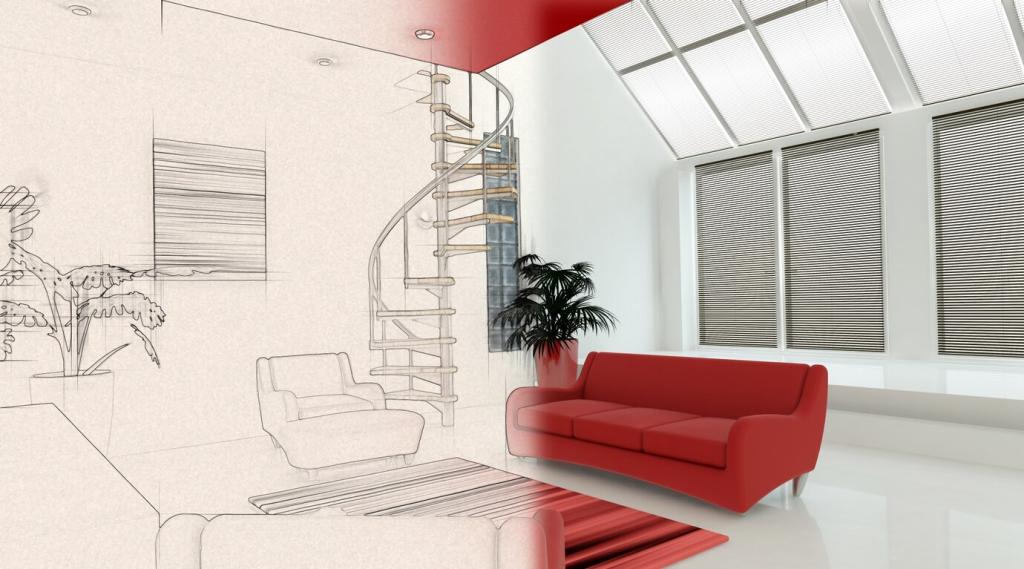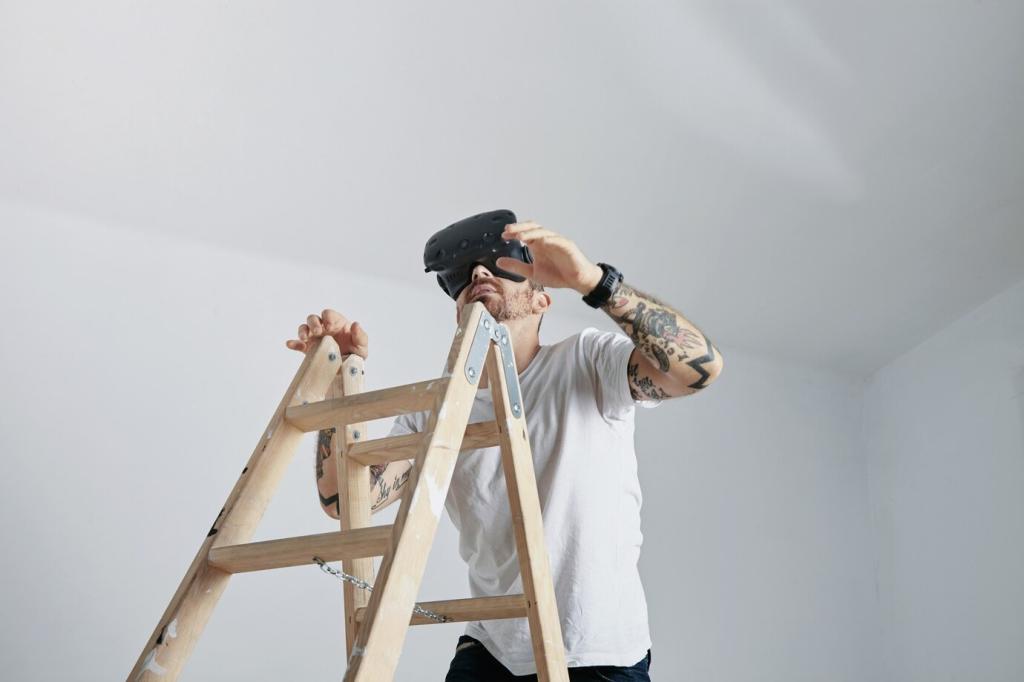Modern Minimalist Renovation Tips
Embracing modern minimalist renovation is all about crafting spaces that echo calm sophistication and purposeful design. This approach seamlessly blends form and function, focusing on clean lines, uncluttered areas, and curated elements that make every detail count. In a world overwhelmed by noise and excess, a minimalist renovation offers a refreshing palette—one where simplicity reigns and comfort flourishes. Whether you’re looking to revamp a single room or transform your entire home, understanding the principles of modern minimalism will help create a harmonious space that stands the test of time. Dive into these insightful tips to master the art of minimalist renovation.

Embracing Open Space

Strategic Wall Removal
When considering open space in your renovation, strategic wall removal is key. By identifying non-load-bearing walls that divide high-traffic areas, you can create a seamless flow between spaces like the kitchen, living room, and dining area. This not only allows for better interaction among family members and guests but also maximizes the influx of natural light, making the entire home feel brighter and airier. Remember to balance open areas with a sense of coziness through subtle boundaries such as rugs or low-profile furniture that delineate zones without physical barriers.

Maximizing Natural Light
Natural light is one of the most powerful tools in modern minimalist renovation. Expanding windows, choosing glass doors, or incorporating skylights radically transforms your space. Sunlight amplifies the feeling of openness, reduces the need for artificial lighting, and emphasizes the simplicity of your decor. Position reflective surfaces near windows to bounce light deeper into your rooms and use sheer window treatments to diffuse brightness evenly across interiors. This approach not only enhances visual spaciousness but also promotes wellness by aligning your home more closely with nature’s rhythms.

Multi-Functional Living Areas
Designing multi-functional living areas is essential in achieving minimalist harmony. With an open concept, delineate subtle zoning to maintain order without crowding the visual field. Use versatile furniture pieces like modular sofas, extendable tables, or built-in benches with storage. This adaptability ensures that each area remains uncluttered and purpose-driven, supporting various daily activities from entertaining guests to relaxing in solitude. By giving careful thought to how each zone serves your lifestyle, you reinforce the minimalist principle of living with intention and clarity.
Simplifying Color Palettes
Building your renovation color palette on neutral foundations is the essence of minimalism. Whites, grays, beiges, and taupes serve as timeless backdrops that accentuate architecture and furnishings. These tones ease the mind, make spaces feel airy, and provide a versatile canvas for future adjustments. This neutral staging helps highlight unique features like wood grains or art pieces, ensuring that accents stand out instead of clashing with their surroundings. It’s a strategy that encourages longevity, as neutrals are unlikely to fall out of favor.
While minimalism often relies on neutral hues, subtle accents can infuse the space with personality without overwhelming it. Choose a single muted shade—such as sage green, matte navy, or dusty terracotta—to introduce in carefully selected accessories or smaller furnishings. In moderation, these soft touches create moments of interest and warmth while preserving the sense of calm. The key is restraint; by limiting the range and vibrancy of accent colors, you deliver depth and character that complements rather than disrupts minimalist intent.
Monochromatic schemes explore variation within a single color family, adding depth while maintaining simplicity. Layering different tones, tints, and shades of one hue introduces complexity and coziness to spaces that may otherwise feel stark. For example, pairing pale dove gray walls with deeper charcoal textiles and soft silver decor maintains a unified, minimalist look but avoids monotony. Monochromatic approaches let you tailor mood and ambiance without the clutter of competing colors, ensuring your minimalist renovation remains visually engaging.
Thoughtful Furniture Selection
Minimalist renovation promotes quality by encouraging you to select fewer, better-made furniture pieces. Rather than crowding rooms with unnecessary items, invest in timeless designs that boast fine craftsmanship, durability, and aesthetic longevity. These pieces serve as focal points, bringing understated elegance and reliability. By choosing quality over quantity, you foster a sense of calm and reduce the cycle of constant replacement, aligning your home with sustainable, conscious living principles.
Optimizing Storage Solutions
Incorporating custom built-in storage is a hallmark of minimalist homes. Wall-mounted cabinets, recessed shelving, and under-stair drawers make the most of every inch without encroaching on living space. These solutions eliminate the need for bulky, standalone furniture and preserve the clean lines essential to modern minimalism. Well-designed built-ins blend into the architecture, allowing other elements to shine while providing abundant, easily accessible storage for daily essentials.
Hidden storage takes creativity a step further, using unused niches or dual-purpose furniture to keep items out of sight. Beds with drawers underneath, ottomans that open to reveal compartments, and benches fitted with lift-up lids exemplify this practice. By utilizing these areas, you maintain a tidy appearance and ensure every item has a home. These discreet features are paramount in maintaining visual calm and fulfilling the minimalist promise of less-is-more in both form and function.
Beyond physical storage, habits play a significant role in sustaining a minimalist space. Incorporate strategic drop zones near entryways and ensure everyday items have designated places. Streamlining routines—such as immediately storing mail, shoes, and bags—prevents the accumulation of clutter. This mindfulness in daily activity underscores the ethos of modern minimalism: every object should have a clear purpose, and maintaining order is part of the lifestyle, not just the design.

Enhancing with Texture and Materials
Incorporating Natural Materials
Natural materials such as wood, stone, and linen anchor minimalist spaces with authenticity and comfort. Hardwood floors, stone countertops, and woven rugs evoke a sense of calm stability and bring organic texture to your rooms. These materials age gracefully and boast inherent variations that retain interest without overwhelming the simplicity of the design. Choosing natural finishes over synthetic ones enhances the connection to nature and encourages sustainability, deepening the intrinsic value of your renovation.
Layering Soft Textures
Minimalist spaces benefit from the juxtaposition of smooth and soft textures. Add plush area rugs, linen cushions, or softly draped throws to counterbalance the crispness of hard surfaces. These elements absorb sound and soften the atmosphere, making your home inviting and comfortable. Carefully chosen textiles can introduce subtle color and pattern, providing visual warmth without complicating the overall scheme. Proper layering of textures ensures your minimalist renovation feels complete, cozy, and lived-in.
Refined Hard Surface Selection
While embracing hard materials, focus on refined finishes that offer understated elegance. Polished concrete floors, matte-finished metals, and honed stone surfaces impart a sophisticated sheen without drawing too much attention. These choices reflect light beautifully and endure heavy use, matching the minimalist priorities of durability and ease of maintenance. By selecting high-quality surfaces in muted tones, you reinforce the modern minimalist ideal of effortless beauty backed by practicality.
A minimalist space thrives on layered lighting that balances form and function. Combine ambient lighting for general illumination with task lighting in work zones and accent lights to spotlight art or architectural elements. Choose fixtures with sculptural simplicity, such as recessed spotlights or slender pendant lamps, that add character without cluttering sightlines. Properly planned layers mean each space is well-lit and visually balanced at every time of day, adapting seamlessly between activities and moods.
Lighting for Atmosphere
Decluttering Philosophy
Mindful Editing of Belongings
Refine your home by intentionally evaluating each item’s role and value. Start by assessing what you truly use and love, releasing what no longer fits your lifestyle. This process is liberating, creating breathing room and ensuring your renovation isn’t overshadowed by unnecessary baggage. Mindful editing isn’t just about disposal but about establishing a sustainable approach to acquiring new items—asking whether each adds long-term value before welcoming it into your home.
Commitment to Ongoing Simplicity
Sustaining a clutter-free home requires ongoing commitment. Develop habits of regular review and organization, ensuring that clutter doesn’t creep back into renovated spaces. Encourage everyone in the household to participate so the minimalist ethos becomes a shared value. By continually reassessing your environment, you keep your renovation’s purpose alive, preserving the calm, restorative qualities that drew you to minimalism in the first place.
Designing for Ease of Organization
Thoughtful renovation can make decluttering second nature. Opt for open yet discreet storage, labeling systems, and intuitive layouts that make tidiness effortless. When every item has a clear purpose and place, maintaining order becomes seamless. Consider designing with future changes in mind, allowing your minimalist home to adapt without becoming overwhelmed by novelty or waste. Organization becomes intrinsic, woven through every aspect of your design.
